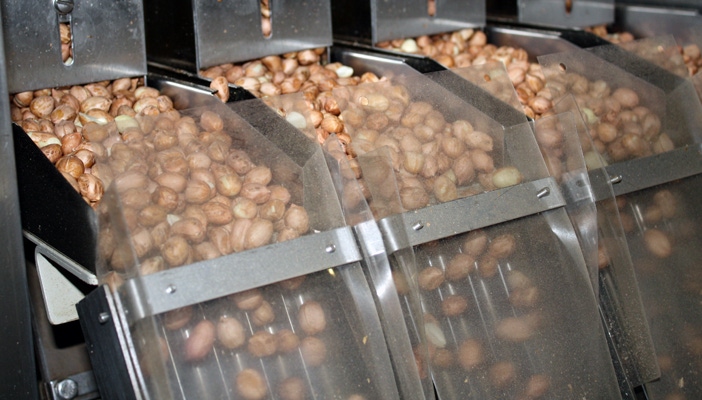
U.S. peanut industry leaders view China as a huge potential market for U.S. peanuts and see real opportunity to sell U.S. branded products directly to Chinese consumers.
In the spring, representatives of the U.S. peanut industry travelled to China on a trade mission where they toured the Chinese peanut industry and sought opportunities to export U.S. peanuts to the world’s most populous country.
“One thing we heard loud and clear is Chinese consumers have very low expectations of peanut products. They expect rancid and stale peanuts,” said Bob Parker, president and CEO of the National Peanut Board during the 2015 Southern Peanut Growers Conference at Callaway Gardens in Pine Mountain, Ga. July 25.

Don Koehler, executive director of the Georgia Peanut Commission, left, says China has the potential to export 500,000 tons of peanuts over the next two years while Bob Parker, president and CEO of the National Peanut Board, says China presents huge opportunities for U.S. branded peanut products.
Parker joined Don Koehler, executive director of the Georgia Peanut Commission; John Powell, executive director of the American Peanut Shellers Association; Jeff Johnson, president and director of marketing with Birdsong Peanuts; Tony Gunter, director of sales for Golden Peanut and Tre Nuts; and Stephanie Grunenfelder, vice president of international marketing with the American Peanut Council, on the trade mission.
Parker said Chinese peanut quality is low due to handling issues, low oleic ratios and limited shelf life.
China is the world’s largest peanut producing country with an output of 12 million to 14 million tons There are 20 million peanut farmers in China compared to 7,500 in the United States. Internally, 65 percent of Chinese peanuts are consumed as oil with 35 percent consumed as edible, Parker said.
However, peanut production is not keeping up with demand in China due to land issues and labor costs, Parker said.
China does import tree nuts and both the U.S. almond and walnut industries actively promote and market their products to Chinese consumers. Parker said tree nuts are viewed as higher quality than peanuts in China.
Parker sees opportunity in China because the high quality of U.S. peanuts could be marketed to Chinese consumers. “We’re going to have to hopefully find a way to help Chinese consumers understand that peanuts are as healthy as other nuts,” Parker said.
The biggest challenge is import duties on raw peanuts are very high at 30 percent. Two years ago when China bought U.S. peanuts, they were moved through the “gray market” in Vietnam to avoid paying import duties, Parker explained.
Koehler told the conference that China has the potential to possibly import up to 500,000 tons of peanuts in the next two years. There is good potential for U.S. branded products for Chinese consumers who want high quality U.S. goods, he added.
“Chinese consumers like American stuff because they view American stuff as being quality. We can’t ignore the fact that that’s where we can go into the market because we can provide something that’s going to be good every time they get hold of it,” Koehler said.
Parker said the internet presents a real opportunity to direct sell U.S. peanut products to Chinese consumers. He noted that 650 million Chinese people are online while 326 million shop online with more than half of that number using a smart phone to make purchases. Last year, 10 percent of all retail sales in China were online and that number is expected to jump up to 20 percent by 2017, Parker said.
About the Author(s)
You May Also Like






